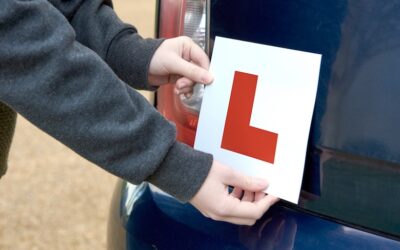Whether you’re a learner or you’ve just recently passed your test, if you’re new to driving, parking restrictions can be tricky to grasp.
This is perfectly understandable. Indeed, certain parking restrictions can trip up even the most experienced of drivers!
So in this post we’ll explain some of the most common parking restrictions, along with some of the key rules to bear in mind when you’re looking for somewhere to stop.
PLEASE NOTE – there are often separate parking regulations for vans and other commercial vehicles. You can read our full guide to commercial vehicle parking regulations here.
Can I Park On A Single Yellow Line?
You can park on a single yellow line, but only sometimes.
A single yellow line means that parking restrictions are in force, but only during certain hours, or on certain days.
So When Can I Park On A Single Yellow Line?
Wherever you see a single yellow line, there should be a sign nearby explaining the restricted hours. So long as it’s outside of these set times, you can park on a single yellow line.
Never take it for granted that you’ll be able to park on a single yellow line. For example, some people think that it’s always legal to park on single yellow lines on Sundays. And in many places, this is indeed the case. But it’s not a universal rule. In some busy areas, single yellow line restrictions will apply throughout the whole week.
So don’t risk it. Always look for a nearby sign to check on the local restrictions.
When Can You Park on a Double Yellow Line?
A double yellow line means “no stopping”. The majority of drivers cannot ever park on a double yellow line.
However, there is one exception to this rule. Blue Badge holders can park on double yellow lines for a maximum of three hours – but only if they don’t cause any obstructions.
What About Red Lines?
Like single yellow lines, single red lines have operating hours and restrictions. So again, look for nearby signs indicating local restrictions. Outside of these restrictions, you can stop, park, or load.
Double red lines are enforced round the clock. There is absolutely no parking on these roads, and most of the time, you can’t stop either – not even for a few seconds.
The only exception concerns, once again, Blue Badge holders. You can temporarily pull up on a double red line to drop off or pick up a Blue Badge holder. Yet you can only do this if you prominently display your Blue Badge. Also, you must move off promptly. Not even Blue Badge holders can park on double red lines.
Is It Illegal to Park on the Pavement?
It’s illegal to park on the pavement in many parts of the UK. It’s against the law in all areas of London and Scotland. Each year, growing numbers of local councils introduce stricter pavement parking regulations. Before long, it may be illegal to park on the pavement everywhere in the UK.
Parking on the pavement involves blocking some or all of the footway. This might cause pedestrians to step into the road to get around your car, which will obviously put them at risk.
Parking on the pavement can block the way completely for certain pedestrians, including elderly people, parents with pushchairs, and people with disabilities.
Parking on Pavement – When is it Allowed?
The problem is that sometimes parking on the pavement feels unavoidable. On narrow streets, for example, there might not be room for cars to park on the kerbside. So drivers might mount the kerb almost completely to avoid blocking the road.
But on such streets, parking might be restricted anyway by single or double yellow lines.
Unless you’re in an area with a blanket ban on pavement parking, such as Scotland or London, you might be OK to park on the pavement if:
- There are no single or double yellow lines on the road.
- You have no choice but to park on the pavement (such as on a narrow road).
- You don’t cause any obstructions through parking on the pavement. If it’s a wide pavement, for example, pedestrians might have no trouble getting around your car.
But never assume you can park on a pavement. Look for signs outlining any parking restrictions in the area. Also check your local council’s website, as the specific rules tend to vary across the country.
What Happens If I Break Parking Restrictions?
Break parking restrictions and you’ll usually get a Penalty Charge Notice (PCN). More serious parking offences might result in a Fixed Penalty Notice (FPN), which might result in you getting some points on your licence. This might affect the price of your car insurance.
You can read our complete guide to parking penalties here. This guide also contains advice on what to do if you want to appeal your ticket.




